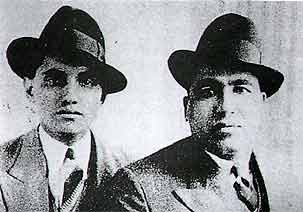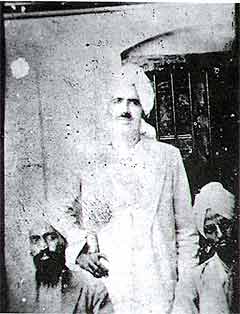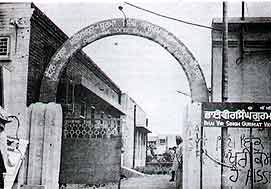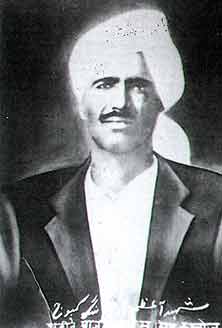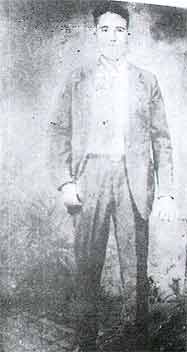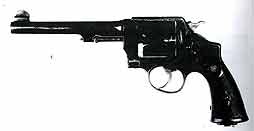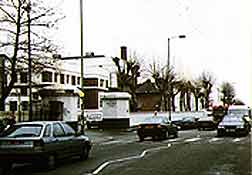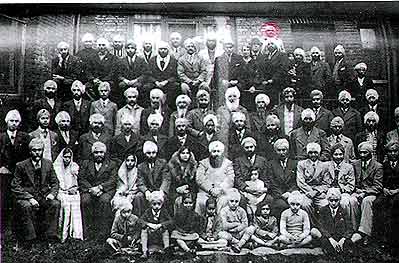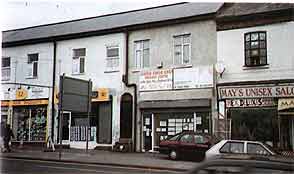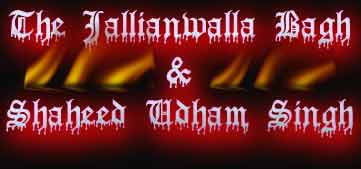
A Saga of Sacrifice
"Na vakil, na appeal, na daleel," this is how the Indian people,
more particularly the
Punjabis, denounced the Rowlatt Act which, from all accounts, was the root-cause
of the unrest that led to the ignoble massacre of Jallianwala Bagh.
The Rowaltt Act, which came into operation on March 21, 1919 was designed
to replace the draconian Defense of India Act which was due to lapse on account
of the termination of the hostilities at the conclusion of World War-I. It
provided special courts for whose judgements there could be no appeal. Trials
were to be held in camera and consideration of evidence was not admissible.
The provincial governments were delegated extra-ordinary powers to search,
arrest and demand security among other things. The irony was that all these
repressive measures were inflicted immediately after the remarkable contribution
made by the Indian soldiers enabling the British to win the War. It was a
move against the British Government's professed aim to prepare India for self-rule
and President Wilson's much-trumpeted 14-point Charter promising the right
of self-determination for all people after the War.
By imposing the Black Act, as the Rowlatt Act was generally called, the British
and Anglo-Indians and Pro-British majority ~ posed a challenge to the Indians.
Indians had no alternative but to accept this challenge to their national
pride and political aspirations. The only way left for them was to wage a
struggle against the might of the British Empire.
Gandhi, who had appealed on the outbreak of the war to the people of India
to help Britain in the war effort whole heartedly, had believed that due to
the great help rendered by India in men, money and material during the war
and great sacrifices of dead and wounded, she must be inevitably rewarded.
But instead of freedom or Home Rule, there came the Rowlatt Act. This brought
Gandhi Ji to the centre of affairs immediately and with this began a new era
in the history of India.
Evidently, the times were not in favour of the British in India. They couldn't
have chosen a worse moment to challenge the people's will. The war had ended
with its economic ills staring hard in the face. Punjab alone had contributed
3,00,000 combatants and 60,000 non-combatants who were being demobilized.
On the other hand, Mahatma Gandhi who had arrived from South Africa in early
1915 had assumed the leadership of the Congress. As a first step, he drafted
a pledge exhorting people to refuse to obey these laws until these were withdrawn.
He then gave a call for 'hartal' to be observed throughout the country on
6 April 1919. The suspension of the economic activity in India in response
to his call was an amazing success. The Mahatma noted it in these words: 'The
whole of India from one end to the other, towns as well as villages, observed
a complete hartal on the day. It was a most wonderful spectacle'.
It was, indeed, a wonderful spectacle - the Hindu-Muslim amity that came to
be witnessed during the current agitation. Swami Shraddha Nanda, an eminent
Arya Samaj leader was invited to address a Muslim congregation at Jama Masjid
in Delhi. Similarly, Mahatma Gandhi and Sarojini Naidu spoke in the mosques
at Bombay.
Among the local leaders, two of the prominent were Dr. Saifuddin Kitchlew
and Dr. Satyapal, who had invited the Congress to hold its 1919 session at
Amritsar. A meeting was organised on March 29, 1919 to explain Gandhi Ji's
plan and it was decided that a hartal would be held on March 30. Dr. Satyapal
was prohibited from speaking at that meeting which was held at Jallianwala
Bagh. Dr. Kitchlew presided over the meeting and it was announced in no uncertain
terms by many of the speakers that their movement was essentially to be peaceful
in character.
Apprehending another hartal on April 6, Lt. Governor O'Dwyer made full arrangements
with police and military authorities. On April 4, Miles Irving, Deputy Commissioner,
Amritsar summoned additional forces. Dr. Kitchlew, Pt. Dina Nath, Pt. Kotu
Mal and Anubhav Anand were prohibited to make speeches in public. However,
once again inspite of all efforts of the
Government. Amritsar saw a complete hartal. The success of the hartal was
an unbearable affront for O'Dwyer.
On April 9, was Ram Naumi and people of Amritsar decided to celebrate this
religious festival as a 'National Solidarity Day'. The festival was very peaceful.
When O'Dwyer learnt about the manner in which Ram Naumi was celebrated at
Amritsar, he decided to take a few actions. Gandhi Ji was served with orders
banning his entry into Punjab and Delhi. He was taken off the train near Paiwal
and sent to Bombay. Simultaneously, Dr. Kitchlew and Dr. Satyapal were arrested.
On April 10, 1919, Dr. Kitchlew and Dr. Satyapal were depo-rted to Dha-ramsala.
The news of their deportation spread like wild-fire in the city. People started
closing their shops and assembling in the Aitcheson Park with the intention
of going to the Deputy Commissioners' house to demand the release of the deported
leaders. At this stage two soldiers opened fire, without the least provocation
from the people, killing a few. The crowd became vio-lent and attacked the
Telegraph office, railway goods yard. Buildings of three banks in Hall Bazaar
were also attacked and a few European officials were killed and wounded.
On April 11, 1919, orders were passed not allowing more than eight persons
to group together. Brig. Gen. R.E.H. Dyer, Commander of the Jalandhar Brigade
arrived at Amritsar and shifted his headquarters from the Railway Station
to Ram Bagh. On April 12,1919, it was announced that a meeting would be convened
the next day in Jallianwala Bagh. So, the die was cast for the fateful day
of April 13, 1919, which proved a turning point in the history of freedom
movement of India.
As it happened, April 13, being Baisakhi Day, a harvest festival and also
sacred to the Sikh people, because on this day in 1699 Guru Gobind Singh,
the tenth Sikh Guru had created the Khalsa, the people were in no mood to
brook any restrictions on movement. A public meeting was announced to be held
at Jallianwala Bagh Maidan close to the Golden Temple premises on the afternoon
of April 13. It was to defy the authorities and to assert the people's right
to assemble and protest.
Situated in the heart of the town, Jallianwala Bagh was more or less an open
enclosure with tall buildings on all the four sides with a narrow pas-sage,
which led into it. It is said that there were not less than 25,000 men, women
and children gathered to participate in the protest meeting. They inclu-ded
Hindus, Sikhs, Muslims and Christians.
Not long after the meeting had started General Dyer appeared on the scene
with his armed troops and without any warning ordered firing aimed at dispersing
the crowd though he had blocked the only exit of the enclosure. The fact of
the matter is that he wished to make an example of it.
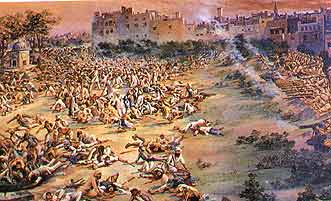
And then leaving the dead and the wounded where they were, Dyer left the ghastly scene along with his troops. Far from attending to the wounded, there was none to offer even water to the dying.
According to the official version, 379 people were killed on the spot and thrice as many wounded to die later. The unofficial number of the dead runs into four figures.
The agony of the people did not end with the Jallianwala Bagh outrage. The town was put under curfew. Water and electricity supply was cut off. Public flogging of the suspects was resorted to. The passers-by were made to crawl on the spot where two British women had been assaulted during the disturbances.
The whole world was shocked to hear the news of the outrage. Poet Rabindranath Tagore renounced his Knighthood.
"The time has come when the badges of honour make our shame glaring in their incongruous context of humiliation, and I for my part, wish to stand shorn of all special distinctions, by the side of those of my countrymen who, for their so-called insignificance, are liable to suffer degradation not fit for human beings".
(Tagore's Protest letter to the Viceroy on May 31, 1919, renouncing Knighthood.)
Sir Edwin Montague, author of the Montague -Chelmsford reforms wrote to the Viceroy condemning Dyer in these words
"It was the savage and inappropriate folly of the order which rouses my anger. I cannot admit that any service that Dyer has rendered anywhere can atone for action of this kind and I am very much worried that he should have escaped punishment for an order, the results of which are likely to be permanent".
While the Congress boycotted the Inquiry Committee appointed by the Government, they nominated their own high-powered committee comprising Mahatma Gandhi, M.R. Jayakar, C.R. Das and Abbas Tyabji. Their enquiry revealed.
1. There was no conspiracy to overthrow the government in the Punjab.
2. No reasonable cause had been shown to justify the introduction of martial law.
3. The Jallianwala Bagh massacre was a calculated piece of inhumanity towards utterly
innocent and unarmed men, including children, and unparalleled for its ferocity in the history of the modern British administration.
On March 13,1940, Udham Singh known to his friends as Ram Muhammad Singh Azad, shot dead Michael O'Dwyer, the Lt. Governor of Punjab at the time of the Jallianwala Bagh massacre, at Caxton Hall in London. Udham Singh was sentenced to death and executed in 1940.
Punjab continued unabated. The more the British rulers hardened their posture, the more the unity between the Hindus and the Muslims came to the fore, fighting shoulder to shoulder in the struggle for freedom.
JALLIANWALA BAGH IN 1919
In 1919, the Jallianwala Bagh was no 'garden' but a desolate piece of land
- a rectangle of irregular shape, about 229 metres long and 13 metres wide.
This area had once belonged to one Bhai Hamit Singh Jallawala, a courtier
of Raja Jaswant Singh of Nabha, who had been a lawyer in the service of Maharaja
Ranjit Singh. Jallianwala Bagh follows from the name of the owner. It was
used as a dumping ground and not even the oldest living citizen of Amritsar
has any recollection now whether it had ever really been a garden. The Bagh,
sunk below the level of the city, was situated in its centre and was surrounded
by narrow lanes. Long before 1919, houses had been built all around the Bagh
with their back walls towards it. It had three or four openings through which
people could pass without much inconvenience and between the houses, parts
of the boundary wall were low enough to lean over. Opposite the main entrance,
there were no houses for about a hundred feet and a low brick and mud wall,
about five feet high marked off this portion. To the right, there was another
low wall made of mud. The Bagh contained one small smadh (grave) towards the
southern side, with four small trees growing near it, and an open wall of
quite big, dimensions towards its eastern boundary.
In order to acquire the Jallianwala Bagh and raise a memorial, a Committee
was formed with Pandit Madan Mohan Malaviya as President and Dr. S.C. Mukherji
as its Secretary. Jallianwala Bagh was purchased from its thirty-four individual
owners for Rs. 50,000 raised by national subscription and consecrated as an
Indian National Memorial. The National Memorial Trust of which Pandit Jawahar
Lal Nehru became the Chairman, took some years to select a suitable design
for the Jallianwala Bagh memorial from the thousands submitted by Indian and
foreign architects. The design chosen in 1956 was jointly prepared by Shri
T.R. Mahendra, a Delhi architect and Mr. Benjamin Polk, also working in Delhi.
Its construction was begun in November 1957 and was completed at a cost of
Rs. 9,25,000.
The Bagh being in a depression, the builders of the memorial had to raise
the level of the surface by 5½ feet to that of the road outside. Four
big stone lanterns flank the pylon, which is composed of 300 prices of stone
with the Ashoka Chakra carved on them. They have been so arranged that the
pylon looks like a flame from all directions. Fourteen small lanterns scattered
over the site provide subdued lighting. On the right side of the pylon is
a pool, 400 feet by 25 feet. Columns indicate, the soldiers standing, verandah,
the semi-circle, which the soldiers had formed, and the central fountain,
the small machinegun used. The 'Flame of Liberty' was constructed in 1954
and inaugurated by the President, Dr. Rajendra Prasad in 1961. On the four
sides of the memorial, the words, "In memory of martyrs-13 April, 1919"
have been inscribed in Hindi, Punjabi, Urdu and English.
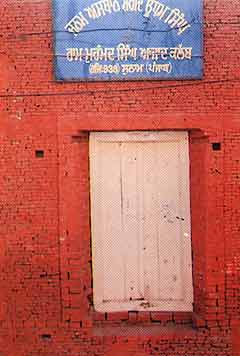
Born at the very end of 1899, Udham Singh had known nothing but hardship and poverty; he had witnessed the brutality of British imperialism, epitomized in the Amritsar Jallianwala Bagh) massacre, which had left several hundred peaceful protesters dead and more than 2,000 wounded. He participated in several radical and revolutionary movements, notably the Ghadar Party.

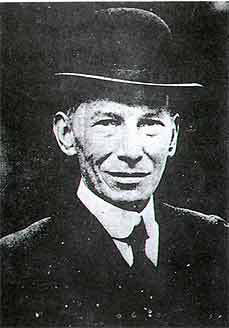
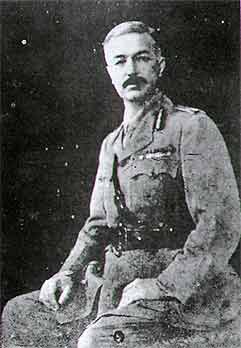
"I do not care about sentence of death. It means nothing at all...I do not worry about it at all.I am dying for a purpose. We are suffering from the British Empire.. .1 am proud to die to free my native land I hope that when I am gone,...in my place will come thousands of my countrymen to drive you dirty dogs out; to free my country...you will be cleansed out of India. And your British imperialism will be smashed. Machine guns on the streets of India mow thousands of poor women and children wherever your so-called flag of democracy and Christianity flies. Your conduct, your conduct-I am speaking about the British government. I have nothing against the English people at all. I have more English friends living in England than I have in India. I have great sympathy with the workers of England. I am against the imperialist government."
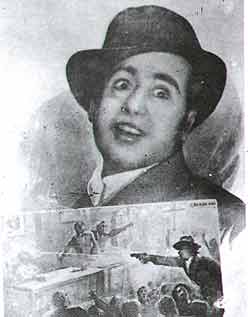


After Udham Singh had left the dock, the judge Justice Atkinson, turned to the press and said:
"I give a direction to the press not to report any of the statement by the accused in the dock. You understand, members Press?"

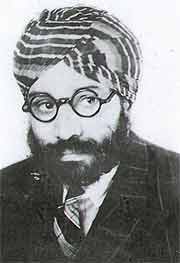
At long last, through the efforts of the Shaheed Udham Singh Trust/Centre and of Comrade Avtar Singh Jouhl, General Secretary of the Workers' Association (GB), this material was released to the Public Records Office in the spring of 1996 and 1997. The release of this crucial information has facilitated the collaboration between the Punjabi University, Patiala, the Shaheed Udham Singh Welfare Trust and the IWA-GB in bringing out the authoritative biography of this great son of India.
Above extract courtesy of Navtej Singh from his book "Challenge to Imperial Hegemony - The Life Story of A Great Indian Patriot Udham Singh."(I strongly suggest reading the above book for a detailed biography of Shaheed Udham Singh- Kanwal)
